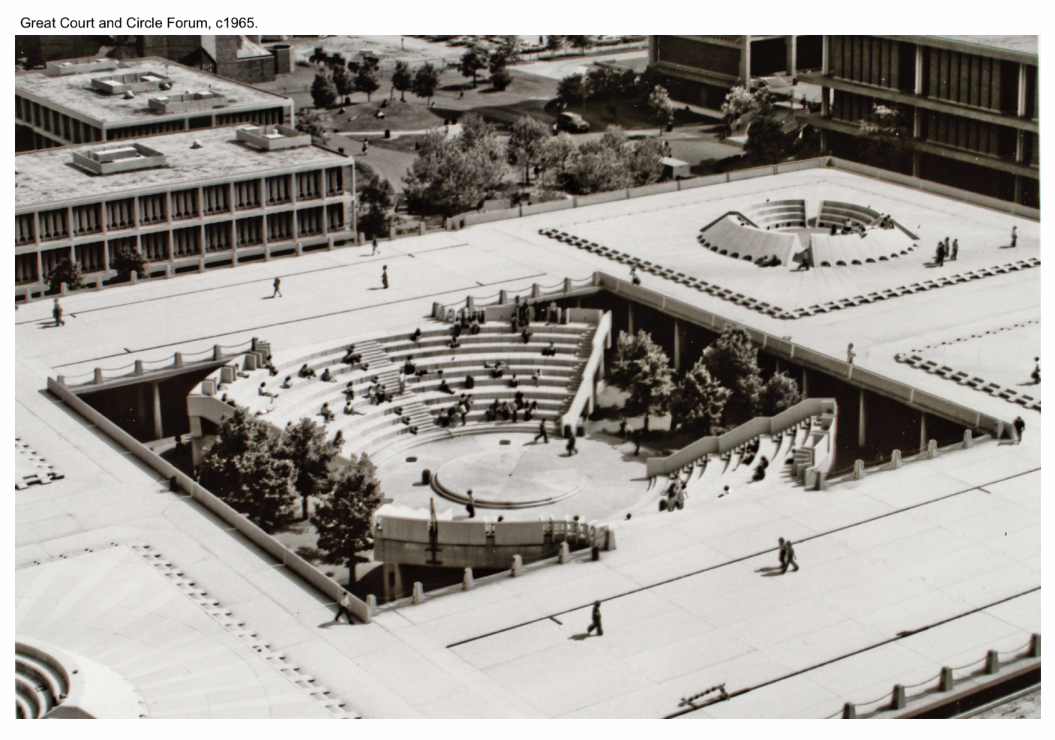A totally bonkers West Loop
This 18-minute lecture by Judith De Jong from a couple of months ago is fantastic. She focuses on Walter Netsch’s campus plan for the University of Illinois - Chicago and what comes next.
The campus itself is famous: radiating waves of knowledge, extreme modernism…and probably the only campus plan that could be mistaken for a jazz album cover:
Courtesy of UIC, Judith De Jong's lecture
De Jong plays it pretty close to the vest in describing Netsch’s vision. She describes his floating amphitheaters calmly as meeting spaces. Whenever I, personally, see them I think of the ever-present stair meeting spaces (think Apple or the Merchandise Mart) with a Memphis Design twist.
Courtesy of UIC, Judith De Jong's lecture
Of course, UIC didn’t really work out as he planned for about a zillion different reasons. The entire campus was in a defensive crouch, which didn’t really support his “ripples of knowledge” idea. Ripples don’t float under the interstates or over the parking lots that hem UIC in. The second-story walkways never really went down as planned.
What’s really fascinating are Netsch’s plans for the north end of campus. Where I go to school now, in the CUPPA building just north of I-290, is an old lingerie factory that is utterly misused as an education building. Don’t get me wrong, great faculty and great staff who make the most out of it, but it’s not winning any adaptive reuse awards.
Courtesy of Made in Chicago Museum
Back when the West Loop was meat markets and industry, Netsch wanted to turn the whole environment up here into a fractalized, hexagonal landscape. It would not have fit into Chicago’s built environment and streetscape whatsoever. It would have been completely insane.
Courtesy of UIC, Judith De Jong's lecture
A whole cascade of hidden corners, complicated wayfinding, public/private areas and not a few classrooms. I have no idea how it was supposed to have worked, but it would have been fascinating.
Netsch’s project never got very far, and that’s probably for the better. Anyone even slightly concerned about displacement would be justifiably up-in-arms over the plan. Netsch, in general, seemed to succeed in projects where he didn’t have to worry about humans.
All the same, it’s fun to see plans like this and wonder how Chicago would’ve adapted. The West Loop now is so aggressively into adaptive reuse it’s impossible to think of different futures over there. Maybe all it would have taken is a different past.



